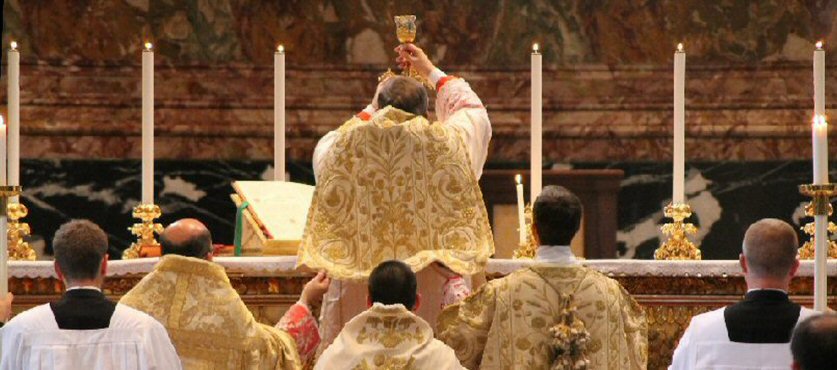General Response to letters received relating to the Risposte Ufficiali of the Congregation for Divine Worship of the 3rd July 1999, Prot 1411/99
Origanal, Page 1 - Origanal, Page 2
- The Roman Missal approved and promulgated on the authority of Paul VI pp in the Apostolic Constitution "Missale Romanum" of the 3rd April 1969 is the on1y form of celebrating the Holy Sacrifice which accords with the Roman Rite currently in force, in consonance with general liturgical law. The same applies, with any necessary reservations to the other liturgical books approved after the Second Vatican Ecumenical Council.
- The use of the form which preceded the postconciliar liturgical renewal of the Roman Rite (also known as "traditional", "ancient", "of St. Pius V", "classic", and "tridentine") is granted, under the conditions set out in the Motu Proprio Ecclesia Dei adflicta, to persons and communities who adhere to this form of the Roman Rite. This facility is granted by a special indult, which in no way signifies that the two forms enjoy parity.
- Those who enjoy the benefit of the indult granted by the Motu Proprio Ecclesia Dei adflicta may use this form freely both in private and in public, in the churches and at the times expressly appointed for the faithful.
- Since the current manner of celebrating according to the Roman Rite conforms to the common liturgical norm, there should be no talk of "two rites" or of "duality of rite". The concession given in the Motu Proprio Ecclesia Dei adflicta safeguards the liturgical sensibilities of those priests and those of Christ's faithful who are attached to this previous usage, but in no way establishes them as a "ritual congregation".
- The Holy See urges bishops to be extremely tolerant to those of Christ's faithful who wish to participate in the sacred liturgy in accordance with the previous liturgical books and to keep their sensibilities constantly before their eyes. These members of Christ's faithful for their part should accept the teaching of the Second Vatican Council and also acknowledge from their hearts the legitimacy and the consistency with orthodox belief of the liturgical texts promulgated after the liturgical renewal.
- In dioceses, in accordance with varying circumstances, benevolence in dealing with those of Christ's faithful who adhere to the previous forms can be expressed either by appointing times suitable for liturgical celebration in some churches or by designating a particular church which may be convenient for these faithful under the charge of a rector or chaplain, or sometimes even by the creation of a personal parish.
- When priests who enjoy this indult to use the previous forms nevertheless celebrate publicly in churches on behalf of communities which follow the forms currently in force, they must use the current books, faithfully following the rules of the current Roman Rite.
- The competence, and indeed the authority of the Holy See in the case of those communities which enjoy the indult to follow the previous forms of the Roman Rite, belongs to the Pontifical Commission Ecclesia Dei. But the relations of these communities with particular Churches, so far as liturgical celebrations are concerned, are subject to the competence of the Congregation of Divine Worship and Sacramental Discipline, other interested jurisdictions having the right to be heard.
- The Official Replies (Risposte ufficiali) by the Congregation for Divine Worship made a matter of public law on the 3rd July 1999 (prot. n. 1411/99) in no way derogate from the concessions granted by the Motu Proprio Ecclesia Dei adflicta, but more succinctly determine the correct relations of the beneficiaries of the Motu Proprio with particular churches in which they wish to celebrate the Sacred Liturgy.
- This clarification is issued and made a matter of public law after consuItation with and with the approval ofthe Pontifical Commission Ecclesia Dei.
At the Vatican Palace, on the 18th day of October 1999.
George Cardinal Medina Estévez, Prefect
Francis Pius Tamburrino, Archbishop and Private Secretary
